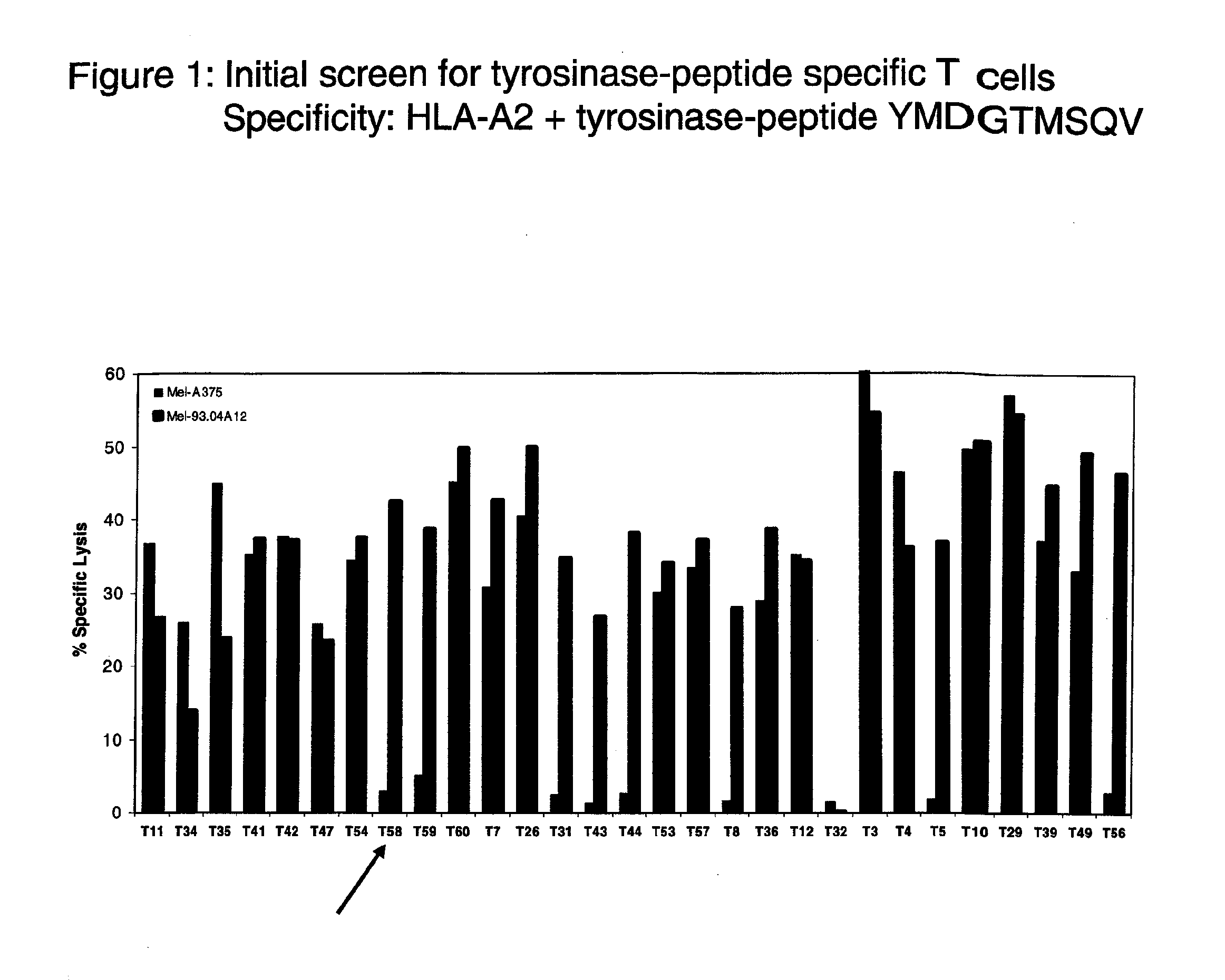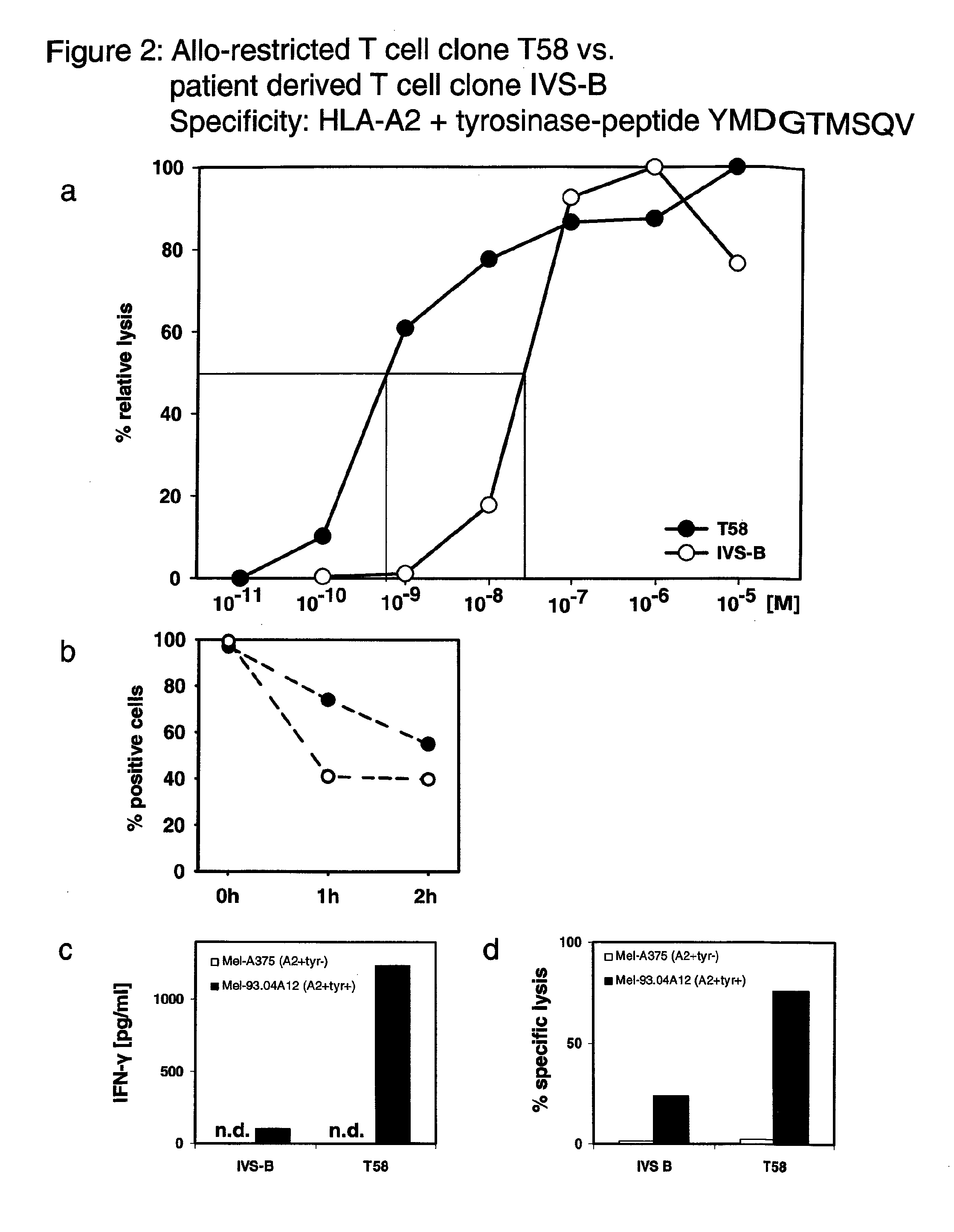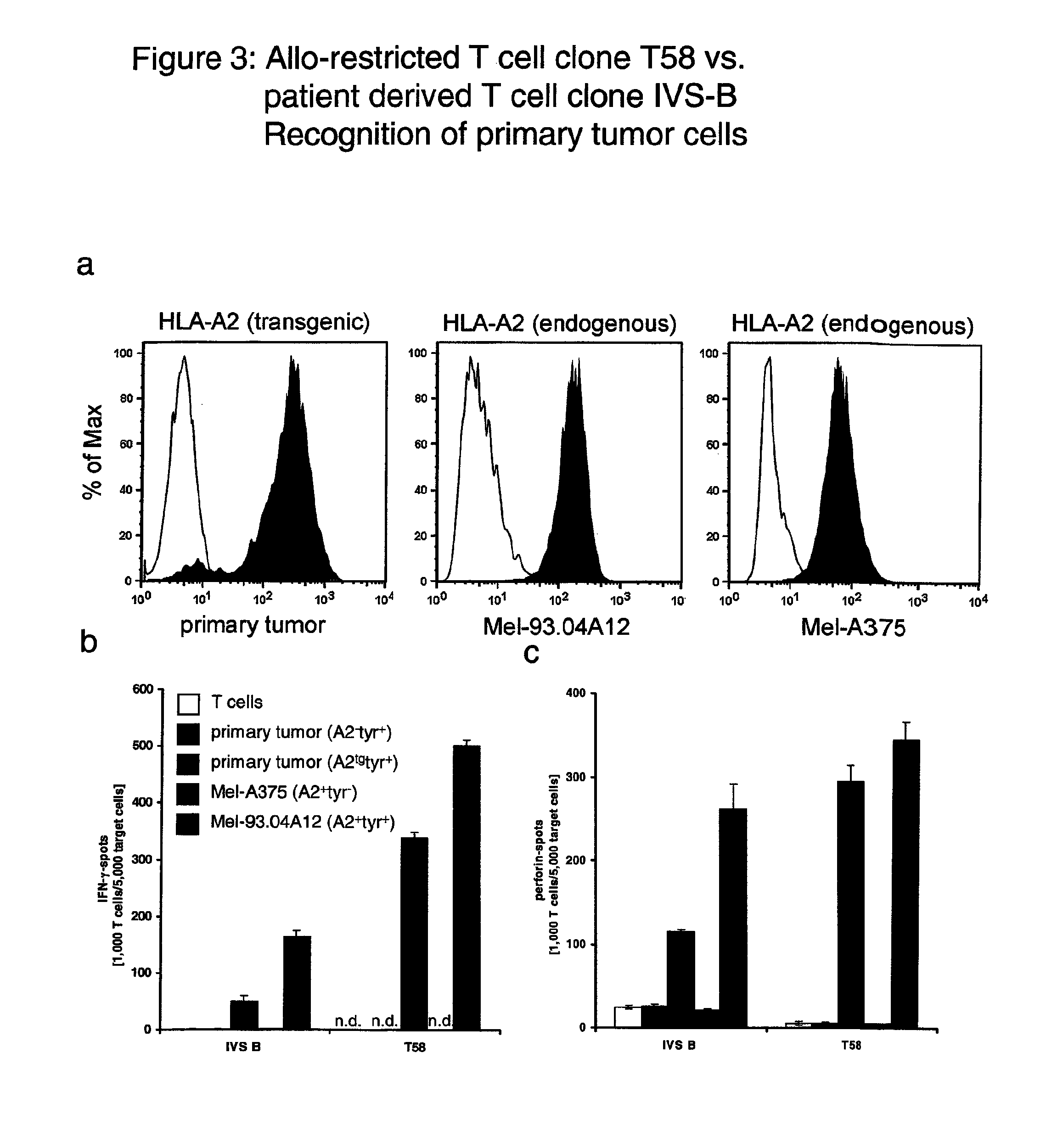High affinity T cell receptor and use thereof
a t cell receptor and high affinity technology, applied in the field of high affinity t cell receptors, can solve the problems of low treatment effect of acute leukemia low affinity of tcr, etc., and achieve the effect of high affinity against tumor-associated antigens and effective treatmen
- Summary
- Abstract
- Description
- Claims
- Application Information
AI Technical Summary
Benefits of technology
Problems solved by technology
Method used
Image
Examples
example 1
[0086]The inventors prepared stimulating dendritic cells (DC) from an HLA-A2-negative healthy donor that co-expressed allogeneic HLA-A*0201-molecules and tyrosinase protein using mature DC that were electroporated with in vitro transcribed (ivt)-RNA for tyrosinase and HLA-A2, as described1,2. These DC were used to prime purified, autologous CD8+ T cells using two rounds of stimulation with freshly prepared DC. After these two rounds of priming, CD8+ T cells with T cell receptors (TCR) recognizing HLA-A2-tyrosinase369-377-peptide complexes were stained using a tyrosinase369-377 / HLA-A*0201-multimer3. CD8+multimer+ cells were isolated by fluorescence activated cell sorting. Sorted cells were cloned in limiting dilution cultures and isolated clones showing HLA-A2 / tyrosinase-peptide specificity were expanded using antigen-independent stimulation4. The T cell clone T58 was identified in an initial screen as having good functional activity (FIG. 1).
[0087]Because T58 was isolated from an HL...
example 2
[0113]In Example 1, data are provided that compared two T cell clones that specifically recognize a peptide derived from tyrosinase (ie YMDGTMSQV hereafter referred to as YMD) presented by HLA-A*0201 molecules. The T cell clone T58 was an allo-restricted, peptide-specific T cell clone derived from an HLA-A2-negative donor. The T cell clone IVS-B was derived from an HLA-A*0201-positive patient who suffered from metastatic melanoma. This melanoma expressed tyrosinase.
[0114]In this Example, comparisons have been extended to include an example of a T cell clone, D115, which is also derived from an HLA-A*0201-positive individual and recognizes the same YMD peptide. However, in contrast to clone IVS-B, clone D115 was generated in vitro using responding T cells derived from the blood of a healthy individual. Therefore, there have been no potential negative impacts on this T cell clone from a tumor environment (ie melanoma) in vivo.
[0115]FIG. 6 shows a comparison of the pattern of the targe...
PUM
| Property | Measurement | Unit |
|---|---|---|
| nucleic acid sequence | aaaaa | aaaaa |
| affinity | aaaaa | aaaaa |
| frequency | aaaaa | aaaaa |
Abstract
Description
Claims
Application Information
 Login to View More
Login to View More - R&D
- Intellectual Property
- Life Sciences
- Materials
- Tech Scout
- Unparalleled Data Quality
- Higher Quality Content
- 60% Fewer Hallucinations
Browse by: Latest US Patents, China's latest patents, Technical Efficacy Thesaurus, Application Domain, Technology Topic, Popular Technical Reports.
© 2025 PatSnap. All rights reserved.Legal|Privacy policy|Modern Slavery Act Transparency Statement|Sitemap|About US| Contact US: help@patsnap.com



